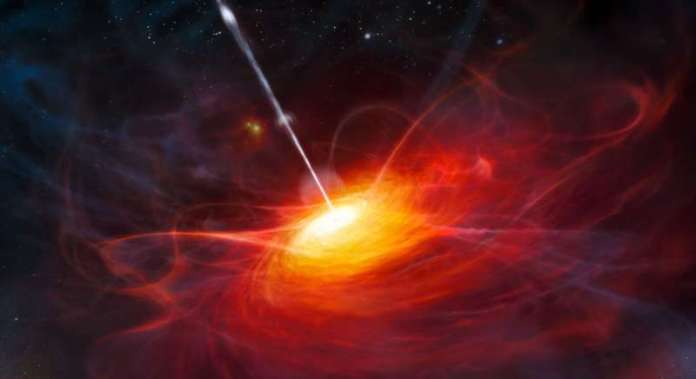In the center of most galaxies lies a supermassive black hole. Some of these are actively feeding on the gas and dust around them, expelling excess energy as powerful jets that are seen as quasars across the entire observable Universe. A new study led by astronomers at the Cosmic Dawn Center reviewed this process using new techniques—and the results may change how we think about the diets of these cosmic behemoths.
Located in the center of galaxies, supermassive black holes are millions or even billion times more massive than our Sun. With their extreme gravitational pull, they are able to engulf vast amounts of gas, dust, and perhaps even stars that wander into their vicinity.
Physics tells us that this material tends to form a disk as it is drawn towards the black hole in a phenomenon called “accretion.” Now these accretion disks are some of the most uninviting, violent places in the known Universe, with velocities approaching the speed of light, and temperatures far in excess of the surface of our Sun. This heat produces radiation which we see as light, but the conversion of heat to light is so efficient—about 30 times more efficient than nuclear fusion—that physicists don’t quite understand how.
Hungry cosmic behemoths
The dietary patterns of black holes have wide range. Some, like the one in our own Galaxy, aren’t very hungry and don’t seem to have accretion disks. But we see other galaxies with ravenous hunger whose supermassive black holes have grown extremely hot accretion disks so bright that they outshine all of the stars in their galaxy.
Only recently have we obtained our first picture of an accretion disk from the Event Horizon Telescope, a worldwide network of radio telescopes. However, this accretion disk belongs to a very nearby galaxy. We cannot repeat this experiment with more distant galaxies as the disks are simply too small and so are unresolved, even by the largest telescopes.
